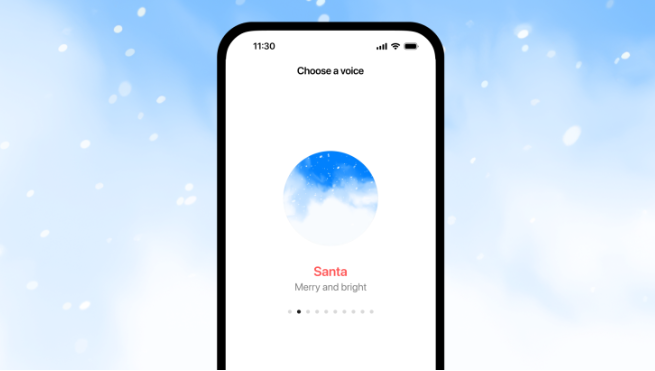OpenAI announced the addition of video chat and screen sharing capabilities to its advanced voice mode, bringing a richer interactive experience to ChatGPT users. This feature has been first launched on iOS and Android versions of ChatGPT Teams, Plus and Pro, and users of the enterprise and education versions will receive the update in January next year. It is worth noting that this advanced voice mode is currently not available to users in some European countries. This update not only improves the interactivity of ChatGPT, but also makes it more useful in actual application scenarios, such as assisting users in completing daily tasks.
OpenAI has announced the long-awaited addition of video chat and screen sharing capabilities to its advanced voice mode.
This new feature is now available to ChatGPT Teams, Plus and Pro users in the iOS and Android mobile apps, and is expected to be rolled out to ChatGPT Enterprise and Education subscribers in January next year. However, users from the European Union, Switzerland, Iceland, Norway, and Liechtenstein will not be able to use this advanced voice mode.

OpenAI first mentioned this feature in May of this year, when the company demonstrated how GPT-4o could "see" a game and interpret its progress. Subsequently, the advanced voice mode was officially launched to users in September. Users can start a video call through a new button on the Advanced Voice Mode screen, which is similar to Facetime and allows ChatGPT to respond in real time to what the user is showing in the video.
In OpenAI's demonstration, ChatGPT helps users brew coffee through video functions. It identifies the coffee appliance, guides the user when to insert the paper filter, and evaluates the brewing results. In addition, ChatGPT can also remember the person who introduced itself, showing higher interactivity. This method of video interaction is similar to Google's recently launched Project Astra, which can also answer users' questions about the objects they see in video chats, such as identifying sculptures on the streets of London.
The screen sharing feature allows ChatGPT to go beyond the application itself and enter the browser environment. Users can simply turn on screen sharing via the three-dot menu, open the app on their phone, and ask ChatGPT about what they see. In the demo, OpenAI researchers triggered a screen share, then opened the Messages app and asked ChatGPT for help in replying to a photo message.
However, ChatGPT's screen sharing feature has similarities to similar features recently launched by Microsoft and Google. Last week, Microsoft launched a preview version of Copilot Vision, which allows Pro subscribers to open Copilot chat while browsing the web, and can identify photos on the web or help with map guessing games. Google's Project Astra can also read browser content in a similar way.
In addition, OpenAI also launched a relaxing and fun "Santa Mode" where users can talk to ChatGPT who imitates Santa's voice.

Unlike the new feature's user restrictions, "Santa Mode" will be available in the mobile app, web version, and Windows and MacOS apps until early January next year. It should be noted that the chat with Santa Claus will not be saved in the chat history, nor will it affect the memory function of ChatGPT.
Highlights:
? Added a new video chat function, ChatGPT can respond to what users see in real time.
?️ The screen sharing function is online, users can request help from ChatGPT on their mobile phones.
? "Santa Mode" is online, users can interact with ChatGPT that imitates Santa Claus's voice.
All in all, this update of OpenAI has significantly enhanced the practicality and entertainment of ChatGPT, bringing users a richer interactive experience. The addition of video chat and screen sharing functions marks a further innovation in the way AI interacts with humans, while "Santa Mode" adds a different kind of fun to the holiday. We look forward to OpenAI bringing more innovative features in the future.